When you start an app, the operating system creates a process for an executable file of the app. It contains the program code and its current activity. Windows assigns a special number known as Process Identifier (PID) which is unique for every process. There are a number of reasons you might want to kill a process, and different methods you can use to terminate it. Here is how it can be done.
Advertisеment
If an app stops responding, consumes a lot of system resources or behaves unexpectedly and doesn't allow you to quit it, you might want to kill its process to forcefully close the app. Traditionally, Windows allowed using Task Manager and the command prompt for these tasks. In addition to these methods, you can use PowerShell. Here is how.
To kill a process in Windows 10, do the following.
- Open Task Manager.
- Click on "More details" in the bottom right corner to enter Full view mode.
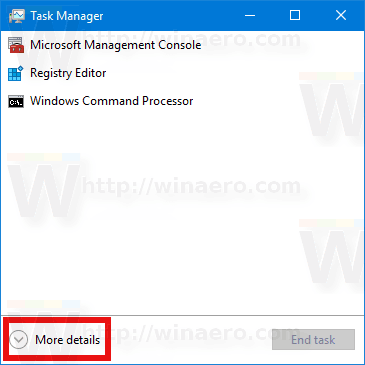
- Select the desired app in the app list.
- Click on the End task button or hit the Del key on the keyboard.
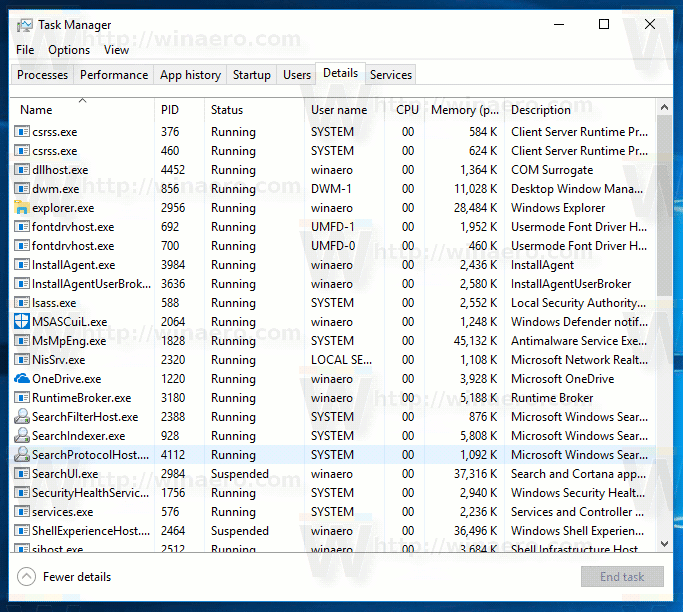
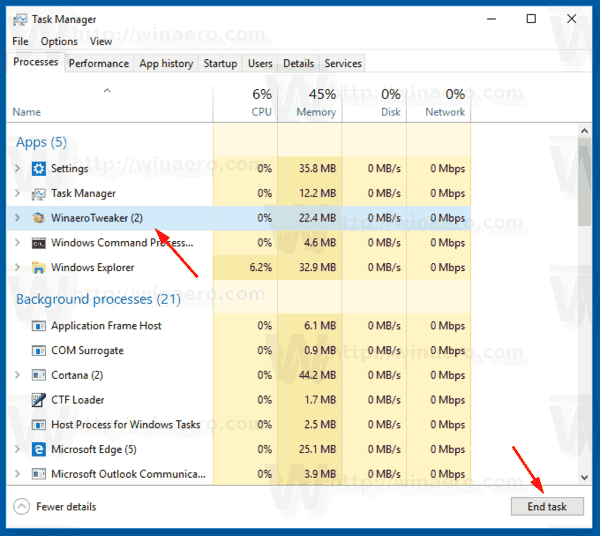
You are done.
This is Task Manager's most well known method.
Note: The same can be done from the Details tab. It is a special tab which lists process names instead of app names. There you can select a process in the list and either click on the End process button or hit the Del key. 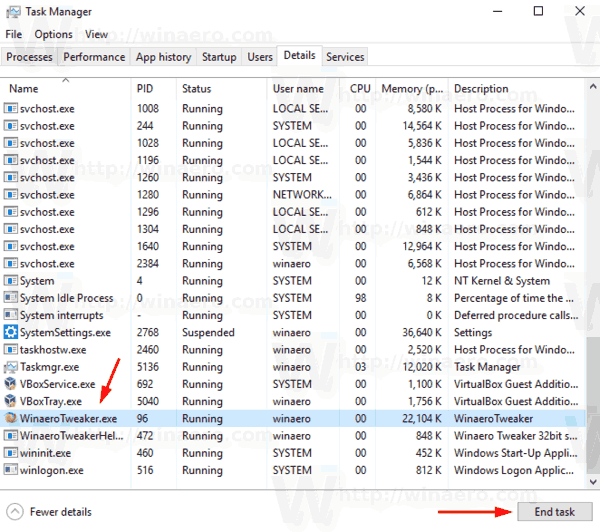
Using the End Task button means Windows first tries to see for a certain timeout if the process has really stopped responding, and attempts to collect a crash or memory dump of the process. It then terminates the app.
Tip: We highly recommend you read the article How to end a process quickly with Task Manager in Windows 10 to learn all Task Manager tricks. Also, you can get the classic Task Manager app in Windows 10 to end processes or tasks.
Another classic method to close a process is the console tool taskill. It comes bundled with modern versions of Windows.
Kill a process using Taskkill
Note: Some processes are running as Administrator (elevated). In order to kill them, you need to open an elevated command prompt instance.
- Open the command prompt as the current user or as Administrator.
- Type tasklist to see the list of running processes and their PIDs. Since the list might be very long, you can use a pipe character with the more command.
tasklist | more
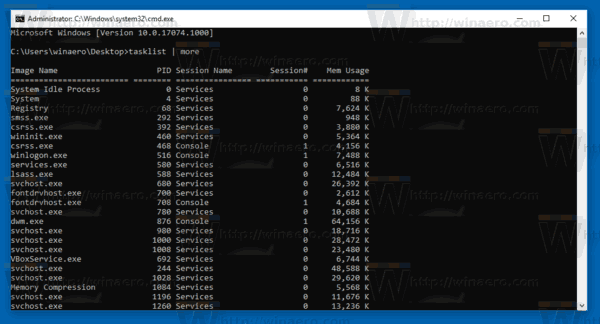
- To kill a process by its PID, type the command:
taskkill /F /PID pid_number
- To kill a process by its name, type the command
taskkill /IM "process name" /F
For example, to kill a process by its PID:
taskkill /F /PID 1242

To kill a process by its name:
taskkill /IM "notepad.exe" /F

Taskkill supports many useful options which you can use to terminate apps. You can learn them by running it as follows: taskkill /?. Using taskkill, you can close all not responding tasks at once in Windows 10.
Kill a process using PowerShell
Note: To kill a process which runs elevated, you need to open PowerShell as Administrator.
- Open PowerShell. If required, run it as Administrator.
- Type the command
Get-Processto see the list of running processes. - To kill a process by its name, execute the following cmdlet:
Stop-Process -Name "ProcessName" -Force
- To kill a process by its PID, run the command:
Stop-Process -ID PID -Force
Examples:
This command will close the notepad.exe process.
Stop-Process -Name "Notepad" -Force

The next command will close a process with PID 2137.
Stop-Process -ID 2137 -Force
If you need to kill a Store app, see the following article:
How to Terminate Store Apps in Windows 10
That's it.
Support us
Winaero greatly relies on your support. You can help the site keep bringing you interesting and useful content and software by using these options:

Some good ways to kill a process, but you forgot Process Explorer, I have been using it since Microsoft bought his company. And have replaced Task Manager with it. Thanks for you description on killing a process with power shell….janek
Well, i’ve tried to cover native methods. Sure, there are tons of extra ways to kill a process.
Is there a way to have tasklist output sorted alphabetically? It truly is a long list.
Thank You
Try
TASKLIST /NH | SORT
tip: does not need to type anything in uppercase ;)
Thank you for this information. I was trying to remote in to work but my outlook was stuck/frozen and could not access anything but command. The taskkill information saved me a long commute in to work.
Thank you for your information on how to kill a Windows process.
Could you possibly advise how to “restart” a process stopped by using taskkill in the command line?
For example, how can taskhostw.exe be restarted in the command line after the using the command “taskkill /F /IM taskhostw.exe” in the command line?
Thank you.
It depends on the process.
If it is a service, you should issue the appropriate command for the service.
If it is a regular executable, you need to start it by typing its executable name and its arguments, if they needed.
Also, there is a
startcommand in the command prompt. Runstart /?to see what it can do for you.– Can I use the option /T /F at the end of the syntax? → Taskkill /im “process name” /T /F
– Or must it be done like this? → Taskkill /F /im voiceover.exe /T
Thanks!
This:
Taskkill /F /im voiceover.exe /T